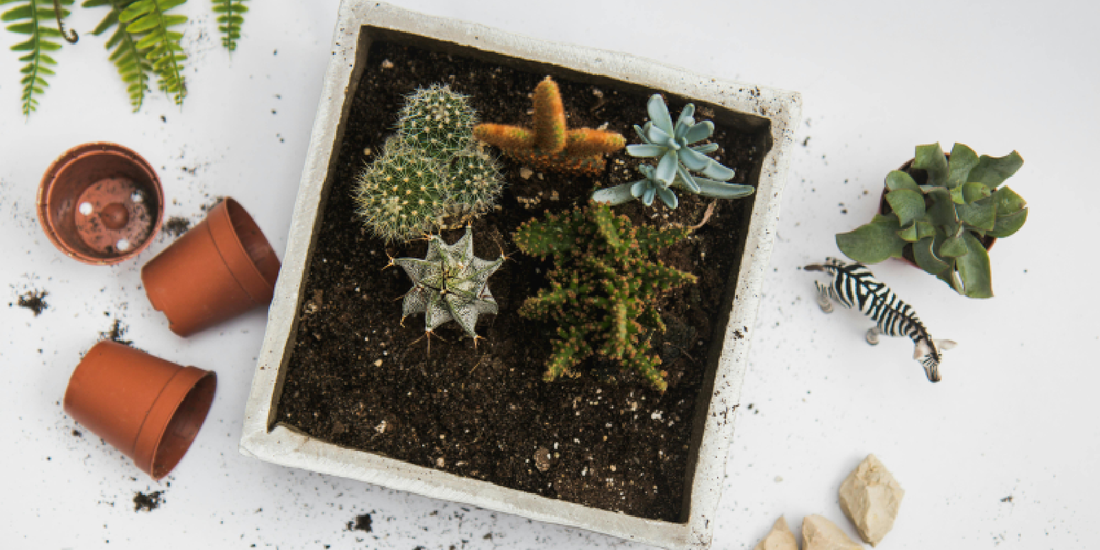
How to Grow Succulents Indoors with Lights
Share
Indoor gardening has become more than just a hobby—it’s a lifestyle choice that brings beauty, calm, and a sense of nature into your living space. Among all indoor plants, succulents stand out for their sculptural shapes, vibrant hues, and minimal care requirements. But here’s the catch: succulents love sunlight, and not every home or apartment has the luxury of abundant natural light.
That’s where grow lights and structured plant shelves like the amoyls VerdantGlow S-Shaped 8-Tier Plant Shelf with Grow Lights come into play. By recreating the conditions of natural sunlight, you can grow healthy, thriving succulents indoors—even in spaces with limited windows.
In this guide, we’ll explore everything you need to know about growing succulents indoors with lights: from understanding light requirements, choosing the right grow lights, setting up your indoor plant stand, to long-term care tips that ensure your succulents stay vibrant year after year.
Why Succulents Need Light
Succulents are native to arid, sun-drenched regions, where they evolved to store water in thick leaves, stems, or roots. While they can survive periods of drought, they cannot thrive without sufficient light. Without light:
- Leaves may stretch out unnaturally (a process called etiolation)
- Colors fade from vibrant greens, reds, and purples to pale yellow
- Growth slows dramatically, and the plant becomes weak
Indoor conditions often lack the 6–8 hours of bright, direct sunlight succulents crave. This is why artificial grow lights are a practical, reliable solution to replicate the solar spectrum indoors.
Understanding the Science of Grow Lights for Succulents
Not all lights are created equal. A standard household bulb won’t provide the correct wavelengths succulents need for photosynthesis. Here are the essentials:
- Light Spectrum
- Succulents benefit most from full-spectrum grow lights, which mimic natural sunlight.
- Blue light encourages compact, leafy growth.
- Red light stimulates flowering and enhances pigmentation.
- Light Intensity
- Succulents need stronger light intensity compared to tropical houseplants.
- Aim for 2,000–3,000 lumens per square foot of growing space.
- Duration
- Most succulents thrive with 12–14 hours of artificial light daily.
- Consistent cycles help prevent stress and mimic natural day-night rhythms.
The VerdantGlow plant shelf comes pre-equipped with integrated grow lights, designed to deliver balanced, energy-efficient lighting across multiple tiers. This ensures every succulent—from top shelf to bottom—receives consistent illumination.
Choosing the Right Grow Light Setup
When growing succulents indoors, you have several options:
- LED Grow Lights: Energy efficient, low heat, long lifespan. Best for succulents.
- Fluorescent Bulbs (T5/T8): Affordable but less efficient than LED.
- Incandescent: Not recommended—produce too much heat, inefficient spectrum.
The built-in LED system in the amoyls VerdantGlow shelf eliminates the guesswork, providing optimized full-spectrum lighting. For gardeners without integrated setups, LED grow panels or clip-on lights can also work, but ensuring even distribution remains a challenge.
Setting Up Your Succulent Shelf
An organized plant display is not only practical but also aesthetically pleasing. The VerdantGlow S-Shaped 8-Tier Plant Shelf with Grow Lights provides a space-saving and modern solution for apartments, offices, and small homes.
Step-by-Step Setup Guide:
- Placement: Position your shelf near a power source for the lights. A corner of a living room, study, or bedroom works well.
- Pot Selection: Choose well-draining pots (terra cotta or ceramic) to prevent root rot.
- Soil Mix: Use a gritty succulent or cactus mix, preferably with added perlite.
- Arrangement: Place light-loving succulents (like echeverias or sedums) on upper tiers. Shade-tolerant varieties (like haworthias or gasterias) can go lower.
- Light Timer: Set your grow lights to turn on for 12–14 hours daily, ideally using an automated timer.
The result? A sculptural, layered display of thriving succulents that doubles as interior décor.
Best Succulents to Grow Indoors with Lights
While most succulents will benefit from artificial lighting, some varieties adapt better to indoor environments:
- Echeveria: Rosette-shaped, colorful leaves; loves bright light.
- Haworthia: Compact, zebra-striped patterns; tolerates lower light.
- Sedum: Trailing varieties add texture to multi-tier shelves.
- Aloe Vera: Medicinal uses plus easy care.
- Gasteria: Thick, tongue-shaped leaves; low maintenance.
- Crassula (Jade Plant): Symbol of prosperity; thrives under grow lights.
Grouping complementary species on your VerdantGlow shelf creates both visual harmony and healthier growth conditions.
Watering Succulents Under Grow Lights
Lighting isn’t the only factor in successful indoor succulent care—watering is equally crucial.
- Rule of Thumb: Water only when soil is completely dry.
- Under Grow Lights: Succulents may dry out faster compared to window-sill setups.
- Frequency: Usually every 10–14 days, but adjust based on temperature, humidity, and pot size.
- Avoid Overwatering: Use drainage trays, and never let pots sit in standing water.
Pairing correct watering with consistent lighting prevents two of the most common problems: root rot and leggy growth.
Styling Your Indoor Succulent Garden
The beauty of succulents lies not only in their resilience but also in their design versatility. With the amoyls VerdantGlow shelf, you can turn functional plant care into an interior design statement.
- Modern Minimalism: Symmetrical echeverias in neutral pots.
- Boho Style: Mix trailing sedums with colorful ceramic containers.
- Workplace Greenery: Compact haworthias in sleek planters on a desk-side shelf.
- Statement Corner: A full 8-tier arrangement as a vertical green feature.
Grow lights ensure that no matter the décor style, your succulents maintain their health and color.
Common Mistakes to Avoid
Even with grow lights, new succulent owners often make avoidable errors:
- Using the Wrong Bulb: Regular desk lamps won’t support photosynthesis.
- Too Much Heat: Placing lights too close can scorch leaves.
- Inconsistent Light Cycles: Irregular lighting leads to stress.
- Overwatering in Low Light: Plants need less water when growth slows.
- Crowding: Poor airflow invites pests like mealybugs.
Awareness of these mistakes ensures long-term success and healthier plants.
Benefits of Using a Multi-Tier Shelf with Lights
The VerdantGlow S-Shaped 8-Tier Shelf doesn’t just provide functionality—it enhances your indoor gardening experience:
- Space-Saving Design: Vertical storage maximizes plant capacity in small rooms.
- Integrated Lighting: Eliminates need for separate light purchases.
- Organized Display: Easy to group succulents by light or water needs.
- Improved Plant Health: Even light distribution prevents uneven growth.
- Stylish Home Décor: S-shaped silhouette blends with modern interiors.
It transforms succulent growing from a small hobby into a central feature of your home.
Long-Term Succulent Care Tips
- Fertilization: Feed with diluted cactus fertilizer once every 2–3 months during active growth.
- Pruning: Remove leggy stems or dried leaves to encourage compact growth.
- Rotation: Occasionally rotate pots to ensure even growth direction.
- Pest Control: Inspect weekly for mealybugs or spider mites; treat promptly.
- Seasonal Adjustments: Succulents need less light and water in winter when growth slows.
Consistency is the secret to maintaining a lush, vibrant collection year-round.
Final Thoughts
Growing succulents indoors no longer has to be a compromise. With proper lighting, structured shelving, and mindful care, your indoor succulent garden can thrive as beautifully as one under open skies.
The amoyls VerdantGlow S-Shaped 8-Tier Plant Shelf with Grow Lights bridges functionality with design, making it easy to create a flourishing indoor oasis. Whether you’re a beginner or a seasoned gardener, this setup ensures your succulents not only survive—but thrive in vibrant color and form.
So, even if your apartment lacks natural sunlight, don’t let that stop you from cultivating a stunning indoor succulent collection. With the right grow lights and tools, your home can become a desert-inspired sanctuary.
